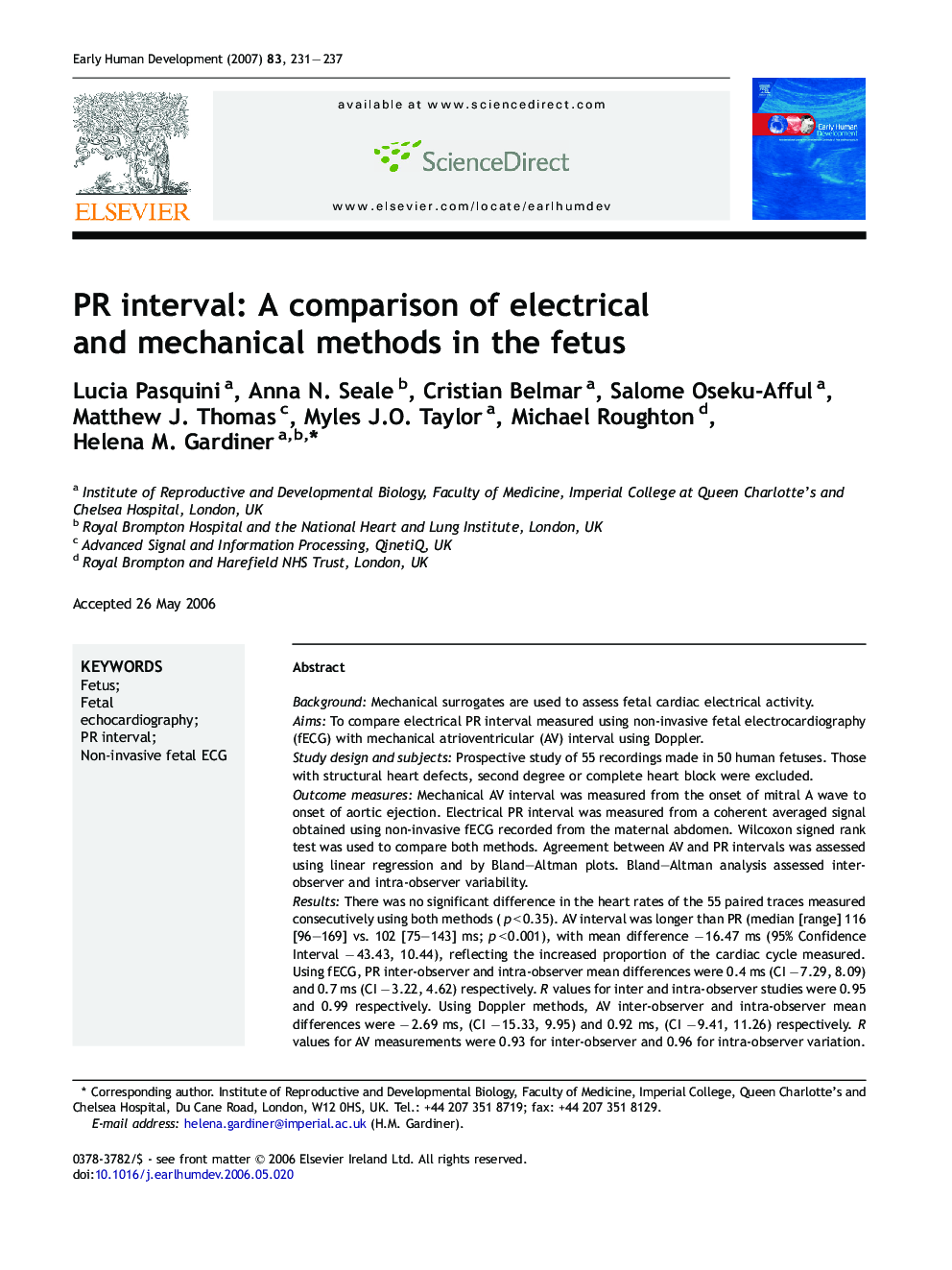| Article ID | Journal | Published Year | Pages | File Type |
|---|---|---|---|---|
| 3917871 | Early Human Development | 2007 | 7 Pages |
BackgroundMechanical surrogates are used to assess fetal cardiac electrical activity.AimsTo compare electrical PR interval measured using non-invasive fetal electrocardiography (fECG) with mechanical atrioventricular (AV) interval using Doppler.Study design and subjectsProspective study of 55 recordings made in 50 human fetuses. Those with structural heart defects, second degree or complete heart block were excluded.Outcome measuresMechanical AV interval was measured from the onset of mitral A wave to onset of aortic ejection. Electrical PR interval was measured from a coherent averaged signal obtained using non-invasive fECG recorded from the maternal abdomen. Wilcoxon signed rank test was used to compare both methods. Agreement between AV and PR intervals was assessed using linear regression and by Bland–Altman plots. Bland–Altman analysis assessed inter-observer and intra-observer variability.ResultsThere was no significant difference in the heart rates of the 55 paired traces measured consecutively using both methods (p < 0.35). AV interval was longer than PR (median [range] 116 [96–169] vs. 102 [75–143] ms; p < 0.001), with mean difference − 16.47 ms (95% Confidence Interval − 43.43, 10.44), reflecting the increased proportion of the cardiac cycle measured. Using fECG, PR inter-observer and intra-observer mean differences were 0.4 ms (CI − 7.29, 8.09) and 0.7 ms (CI − 3.22, 4.62) respectively. R values for inter and intra-observer studies were 0.95 and 0.99 respectively. Using Doppler methods, AV inter-observer and intra-observer mean differences were − 2.69 ms, (CI − 15.33, 9.95) and 0.92 ms, (CI − 9.41, 11.26) respectively. R values for AV measurements were 0.93 for inter-observer and 0.96 for intra-observer variation.ConclusionsNon-invasive fECG is a robust tool to measure the PR interval with narrow limits of agreement.
